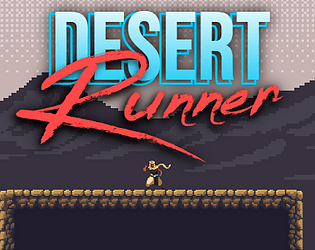In Defense of Perfection: Why SkiTag is a Masterpiece Masked in Minimalism
Let us begin by confronting the blasphemous statement hurled by wallet472 into the gaming discourse — a flippant and uninformed “holy mid” directed at SkiTag. On the surface, yes, SkiTag is a brief, 10-second experience where a basic character on skis dodges trees. There’s no turning. No acceleration. No levels. No upgrades. No power-ups. No tutorials. But to reduce SkiTag to mere simplicity is to fundamentally misunderstand it. In its brevity, its constraints, and its stoic refusal to be anything more than it needs to be, SkiTag becomes something few games today are brave enough to be: perfect.
This is not hyperbole. This is the raw truth about a game that has mastered the most elusive principle in game design: elegant minimalism. Created by the enigmatic duo Rohan and Harshith, SkiTag isn’t just a game. It’s a moment — a haiku in a medium dominated by bloated novels, a pixelated sonnet in an industry obsessed with visual bombast and monetization.
Let us dissect exactly why this game, in all its stripped-down glory, deserves nothing less than reverence.
I. The Mechanics of Constraint: Freedom Through Limitation
In most games, control is a selling point. You can jump, dash, block, shoot, crouch, fly, crawl, and reload. Yet in SkiTag, you do… none of that.
You can’t turn.
You can’t slow down.
You can’t go faster.
You move. That’s it.
But what SkiTag understands — and what wallet472 tragically fails to grasp — is that limitation breeds creativity, tension, and purity. When a game removes all options but one — survive — the mind enters a state of hyperfocus. Every tree you dodge feels monumental. Every narrow miss? A spike of adrenaline. The absence of choice doesn’t reduce engagement; it intensifies it.
It is the same genius that makes Flappy Bird timeless, that makes Tetris eternally relevant. Complexity is easy. Purity is rare.
II. The 10-Second Design Philosophy: Ludic Microcosm
How many games waste your time?
Grind for hours. Wait through cutscenes. Pay for upgrades. Watch loading screens.
Then there is SkiTag, a game that respects you enough to deliver its essence in 10 seconds. That’s not a flaw. That’s design discipline.
10 seconds is not a limit — it is a frame. Within it lies everything SkiTag has to say. It invites you to die quickly, restart instantly, and enter a rhythm of precision and determination. Each round is a distilled shot of dopamine — fast, clean, perfect.
You don’t play SkiTag to “progress.” You play to exist in the moment.
III. The Visual Aesthetic: Pixel Purity and Unironic Rawness
No flashy shaders. No ray-traced reflections. No motion blur.
Just a character. On skis. Sliding between trees.
That’s SkiTag’s defiance in action — a refusal to impress through gimmickry. The graphics aren’t “basic”; they are honest. They are the deliberate choice of developers who know that form follows function. In a world saturated with overproduced garbage chasing photorealism, SkiTag strips it all back, offering a graphical style that says, “I am not here to lie to you.”
It’s not lazy — it’s liberating.
IV. The Philosophical Core: Memento Mori on Skis
The gameplay loop of SkiTag isn’t just entertainment. It’s allegory.
You spawn. You descend. Trees rush toward you.
No turning back. No slowing down. No do-overs.
Eventually, you hit something. The end comes. You reflect. You try again.
Sound familiar?
That’s life.
SkiTag is a metaphor in motion: the inevitability of forward momentum, the randomness of obstacles, the quiet panic of knowing it all ends soon. And yet, every playthrough is a refusal to accept that fate — a quiet, pixelated rebellion.
Only a fool calls that “mid.”
V. The Developers: Rohan and Harshith — Visionaries in a Noisy World
Who are Rohan and Harshith? Are they industry giants? No. They are something far rarer — artists untainted by corporate bloat, unburdened by the need to appease shareholders or Reddit threads.
They didn’t pad SkiTag with loot boxes. They didn’t design it for Twitch metrics. They made a game — small, perfect, unflinching. That takes courage. That takes vision.
Their choice to keep SkiTag pure is a stand against modern game design rot. They are monks in a monastery of code, chiseling joy out of ones and zeros.
VI. The Legacy of the “Mid” Accusation: A Cautionary Tale
What does “mid” mean anymore?
When wallet472 says “holy mid,” he isn’t critiquing design — he’s reacting from a place of desensitization. After years of games promising hundreds of hours, lifetimes of content, sprawling open worlds, he sees SkiTag and says, “Is that it?”
But that’s like walking into an art gallery, seeing a single black brushstroke on white canvas, and asking “where’s the rest?”
The rest is in the experience. In the twitch of your fingers. In the tightness of your chest when you slide through a one-pixel gap.
Calling SkiTag “mid” is a confession — not about the game, but about the speaker.
Final Words: Perfection Isn’t Loud — It’s Skiing Through Trees
SkiTag doesn’t need to be more. It doesn’t ask for your money, your time, your loyalty. It just exists — pure, complete, and joyful. It knows what it is. It says what it wants to say. And then it lets you go.
To the untrained eye, it’s just a man on skis. But to those willing to look deeper, it’s a design masterclass, a philosophical reflection, and a celebration of what games once were — and what they still can be.
So no, wallet472.
It’s not “holy mid.”
It’s holy.


